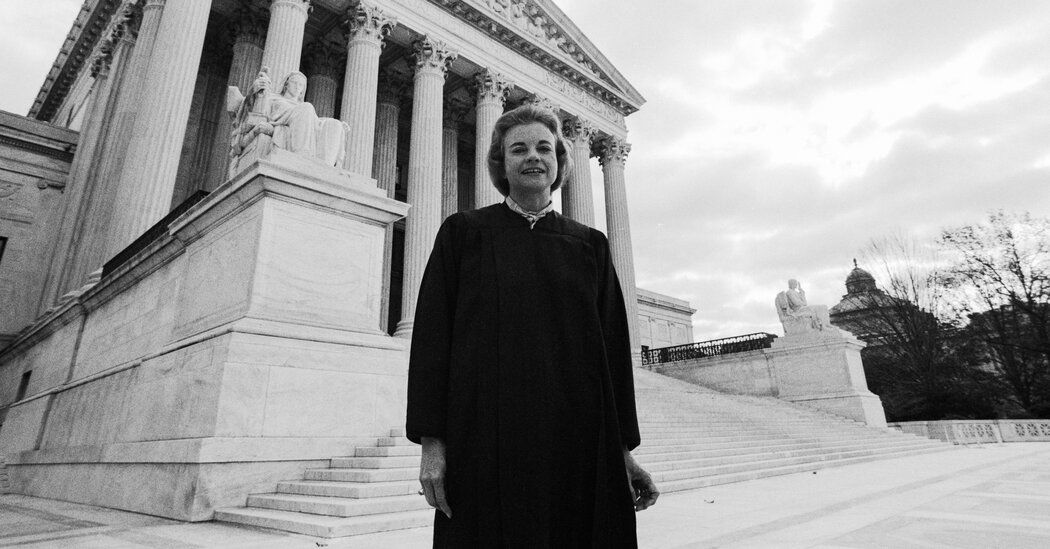Chief Justice John G. Roberts Jr. delivered a fond tribute to former Justice Sandra Day O’Connor on Thursday, celebrating her legacy as the first woman on the Supreme Court and her commitment to advancing civics and civility after her retirement.
During an award ceremony at Duke University to recognize her contribution to civics education, Chief Justice Roberts reiterated his admiration of his former colleague, a crucial swing justice who was often referred to as the most powerful woman in America. He eulogized her in December shortly after her death at 93.
“Sandra Day O’Connor expanded the public image of what it meant to look like a judge,” he said. “She sounded the alarm about the growing lack of appreciation of what it means to be a citizen.”
For her work in civics education, she was recognized on Thursday with the Bolch Prize for the Rule of Law, an award that has often been given to honor judges, including former Justice Anthony M. Kennedy, for lifetime achievements. The award was accepted by her son Scott O’Connor.
The paths of Chief Justice Roberts and Justice O’Connor have long intersected.
On his first day of work at the Justice Department in 1981, the young Mr. Roberts was assigned to help prepare the future justice for her confirmation hearings in the Senate, putting together draft answers to questions he expected her to face. She was ultimately confirmed by a vote of 99 to 0.
Justice O’Connor would then sit on the bench for every one of the more than three dozen cases Chief Justice Roberts argued before the Supreme Court as a lawyer, he told the audience on Thursday.
Years later, in 2005, he was nominated by President George W. Bush to succeed Justice O’Connor when she announced she would retire. The two ultimately served alongside each other on the bench for less than a year after the death of Chief Justice William H. Rehnquist left a more urgent vacancy.
For a brief period before the arrival of Justice Amy Coney Barrett in 2020, Chief Justice Roberts had a taste of the role Justice O’Connor played throughout much of her time on the court, serving as the swing vote and the ideological center. In her nearly 25 years on the court, Justice O’Connor frequently staked out a middle ground on contentious issues like abortion, gay rights and affirmative action.
Echoing previous public remarks memorializing her, Chief Justice Roberts paid tribute to Justice O’Connor’s trailblazing role, citing how she had laid a foundation for women to follow at a time when they were not seen as equals.
Flipping through photos from early in her career, he paused several times to highlight the conspicuous scarcity of other women around her in her law school class, a moot court competition and later on the Supreme Court, drawing laughs from the crowd.
“I certainly felt that she felt she had a responsibility as the first woman on the Supreme Court to show that she could more than keep up with the boys,” he said on Thursday. “But I think she also felt a responsibility as the most powerful woman in America to be out there, putting her best foot forward and promoting the values that help define our country.”
Justice O’Connor stepped down in 2006 to care for her husband, who was battling Alzheimer’s disease, but remained active in public life, hearing cases on appeals courts and promoting civics education, including by establishing an online program. In 2018, she announced she had dementia.
Her example helped open the door for others, however. Today, four of the nine justices are women.


